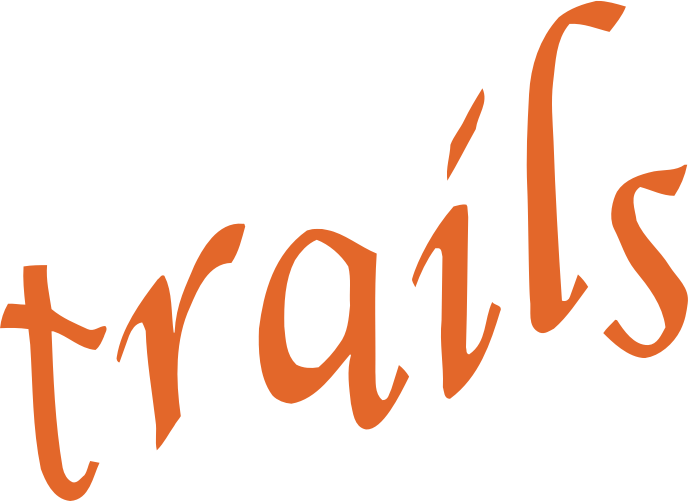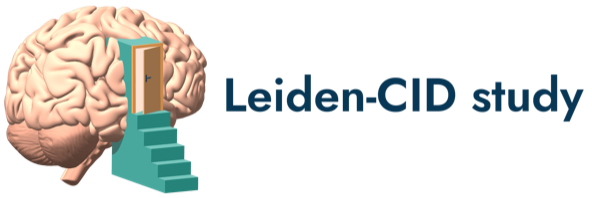-
measure Diffusion Tensor Imaging (DTI)
Study: Generation R Mode of collection: MeasurementsAndTests MRI Available measurements: Generation R 7 years 9-10 years 13-14 years 17-18 yearsDiffusion Tensor Imaging (DTI) is a Magnetic Resonance Imaging‑based neuroimaging technique that makes it possible to estimate the location, orientation, and anisotropy of the white matter tracts of the brain.Created October 17, 2024 • Updated October 20, 2024 -
measure Finger tapping task
Study: Generation R Mode of collection: MeasurementsAndTests Behavioral/cognitive task Available measurements: Generation R 9-10 yearsThe Finger Tapping Task is a computerized task that assesses motor control, speed and lateralized coordination. During the task, children have to tap switching between their right, left, or both index fingers as quickly as possible for 10 seconds. A total of five trials are measured, starting with a visual and an auditory queue. The total number of finger...Created October 17, 2024 • Updated October 20, 2024 -
measure Inflammation and immunology markers
Study: Generation R Mode of collection: MeasurementsAndTests Biological sample/measurement Available measurements: Generation R Early pregnancy Mid pregnancy 5-6 years 9-10 yearsInflammation markers, for instance C-reactive protein (CRP), Lymphocytes, Neopterin, Immunoglobulin E (IgE), Immunoglobulin G (IgG), and tissue Transglutaminase Immunoglobulin A (tTg-IgA), measured with traditional enzymatic tests, such as Enzyme-Linked Immunosorbent Assays (ELISA).Created October 17, 2024 • Updated October 20, 2024 -
measure Eye examination
Study: Generation R Mode of collection: MeasurementsAndTests Biological sample/measurement Available measurements: Generation R 5-6 years 9-10 years 13-14 years 17-18 yearsThe eye examination is a visual acuity test. The eye examination consisted of presenting monocular visual acuity with logarithm of the minimum angle of resolution based Early Treatment Diabetic Retinopathy Study charts at 3 m by means of the fast Early Treatment Diabetic Retinopathy Study method.Created October 17, 2024 • Updated October 20, 2024 -
measure Metabolic biomarkers
Study: Generation R Mode of collection: MeasurementsAndTests Biological sample/measurement Available measurements: Generation R Early pregnancy 5-6 years 9-10 yearsLipids, for instance Cholesterol, Triglycerides, Low-Density Lipoprotein Cholesterol (LDL-C), High-Density Lipoprotein Cholesterol (HDL-C), Lipoproteins, and Apolipoproteins measured with traditional enzymatic tests, such as Enzyme-Linked Immunosorbent Assays (ELISA).Created October 17, 2024 • Updated October 20, 2024 -
measure Functional connectivity Magnetic Resonance Imaging (rs-fMRI)
Study: Generation R Mode of collection: MeasurementsAndTests MRI Available measurements: Generation R 7 years 9-10 years 13-14 years 17-18 yearsFunctional magnetic resonance imaging (MRI) is a non-invasive technique for examining brain activity. Resting state fMRI aims to assess spontaneous brain activity using MRI while the participant is at rest, not performing any specific task. It captures ongoing functional connectivity patterns within the brain.Created October 17, 2024 • Updated October 20, 2024 -
measure Reading the Mind in the Eyes Test (RMET)
Study: Generation R Mode of collection: MeasurementsAndTests Behavioral/cognitive task Available measurements: Generation R 9-10 yearsThe Reading the Mind in the Eyes Test (RMET) assesses the ability to recognize complex mental states as expressed by human eyes. Participants pick one of four options (e.g. puzzled, nervous, insisting or contemplative) which they think best describes what the person in each photograph is thinking or feeling.Created October 17, 2024 • Updated October 20, 2024 -
measure Stool microbiota
Study: Generation R Mode of collection: MeasurementsAndTests Biological sample/measurement Available measurements: Generation R 9-10 yearsStool microbiota encompasses the diverse community of microorganisms residing in the gastrointestinal tract that play crucial roles in digestion, immunity, and overall health.Created October 17, 2024 • Updated October 20, 2024 -
measure Intima-media thickness
Study: Generation R Mode of collection: MeasurementsAndTests Biological sample/measurement Available measurements: Generation R 9-10 years 13-14 yearsThickness of the carotid intima media was assessed through ultrasonographic recordings.Created October 17, 2024 • Updated October 20, 2024 -
measure Biomarkers in endocrinology/nephrology
Study: Generation R Mode of collection: MeasurementsAndTests Biological sample/measurement Available measurements: Generation R Early pregnancy 5-6 years 9-10 yearsLiver enzymes, for instance Albumin, Jodide, Aspartaat Aminotransferase (ASAT), and Alanine Transaminase (ALAT), measured with traditional enzymatic tests, such as Enzyme-Linked Immunosorbent Assays (ELISA).Created October 17, 2024 • Updated October 20, 2024 -
measure Structural Magnetic Resonance Imaging (MRI)
Study: Generation R Mode of collection: MeasurementsAndTests MRI Available measurements: Generation R 7 years 9-10 years 13-14 years 17-18 yearsStructural magnetic resonance imaging (MRI) is a non-invasive technique for examining the anatomy and pathology of the brain (as opposed to using functional magnetic resonance imaging [fMRI] to examine brain activity).Created October 17, 2024 • Updated October 20, 2024 -
measure Walking Backwards task
Study: Generation R Mode of collection: MeasurementsAndTests Behavioral/cognitive task Available measurements: Generation R 9-10 yearsThe Walking Backwards task (Rückwärts Balancieren) from the Body Coordination Test for Children (Korperkoordinationstest für Kinder) assesses balancing ability. Children are asked to walk backwards on three different balance beams. They start with a forwards practice, after which they have to walk backwards twice.Created October 17, 2024 • Updated October 20, 2024 -
measure Length and weight
Study: TRAILS Mode of collection: MeasurementsAndTests Anthropometrics/Body measures Available measurements: Population cohort POP - T1 POP - T2 POP - T3 POP - T4 POP - T5 POP - T6 POP - T7
Clinical cohort CC - T1 CC - T2 CC - T3 CC - T4 CC - T5 CC - T6 CC - T7Length and weight assessment using a stadiometer and personal scale. Length and weight of partners were not measured, but self-reported.Created October 17, 2024 • Updated October 20, 2024 -
measure Diffusion Tensor Imaging (DTI)
Study: L-CID Mode of collection: MeasurementsAndTests MRI Available measurements: Early Childhood Cohort ECC - T5
Middle Childhood Cohort MCC - T1 MCC - T3 MCC - T5 MCC - T7Diffusion Tensor Imaging (DTI) is a Magnetic Resonance Imaging‑based neuroimaging technique that makes it possible to estimate the location, orientation, and anisotropy of the white matter tracts of the brain.Created October 17, 2024 • Updated October 20, 2024 -
measure Social Network Aggression Task (SNAT)
Study: L-CID Mode of collection: MeasurementsAndTests Behavioral/cognitive task Available measurements: Early Childhood Cohort ECC - T5
Middle Childhood Cohort MCC - T1 MCC - T3 MCC - T5 MCC - T7The Social Network Aggression Task (SNAT) aims to measure behavioral aggression following social feedback, by giving the child an opportunity to respond aggressively in response to different types of feedback provided by unknown peers.Created October 17, 2024 • Updated October 20, 2024 -
measure fMRI - Prosocial Cyberball Game
Study: L-CID Mode of collection: MeasurementsAndTests MRI Available measurements: Middle Childhood Cohort MCC - T1 MCC - T3 MCC - T5The fMRI - Prosocial Cyberball Game measures brain activity during the Prosocial Cyberball Game, in which a child has the opportunity to help a socially-excluded child in a ball throwing game.Created October 17, 2024 • Updated October 20, 2024 -
measure Saliva sample - Testosterone
Study: L-CID Mode of collection: MeasurementsAndTests Biological sample/measurement Available measurements: Middle Childhood Cohort MCC - T5Saliva was collected using a cotton swab or a collection device, such as a tube or container (passive drool).Created October 17, 2024 • Updated October 20, 2024 -
measure Sensorimotor Synchronization Task
Study: L-CID Mode of collection: MeasurementsAndTests Behavioral/cognitive task Available measurements: Middle Childhood Cohort MCC - T5The Sensorimotor Synchronization Task aims to assess the child's rhythmic coordination of perception and action. During the task, the child is instructed to compare rhythms and judge whether sounds are in sync with a given rhythm.Created October 17, 2024 • Updated October 20, 2024 -
measure Altruistic Punishment/Compensation Game
Study: L-CID Mode of collection: MeasurementsAndTests Behavioral/cognitive task Available measurements: Middle Childhood Cohort MCC - T5-Covid MCC - T6The Altruistic Punishment/Compensation Game (APCG) measures prosocial and altruistic behavior by giving the child the option to altruistically compensate/punish someone who was excluded/who excluded an other player during the Prosocial Cyberball Game.Created October 17, 2024 • Updated October 20, 2024 -
measure fMRI - Social Network Aggression Task
Study: L-CID Mode of collection: MeasurementsAndTests MRI Available measurements: Early Childhood Cohort ECC - T5
Middle Childhood Cohort MCC - T1 MCC - T3 MCC - T5 MCC - T7The fMRI - Social Network Aggression Task measures brain activity during the Social Network Aggression Task, in which the child can respond aggressively in response to different types of peers.Created October 17, 2024 • Updated October 20, 2024



